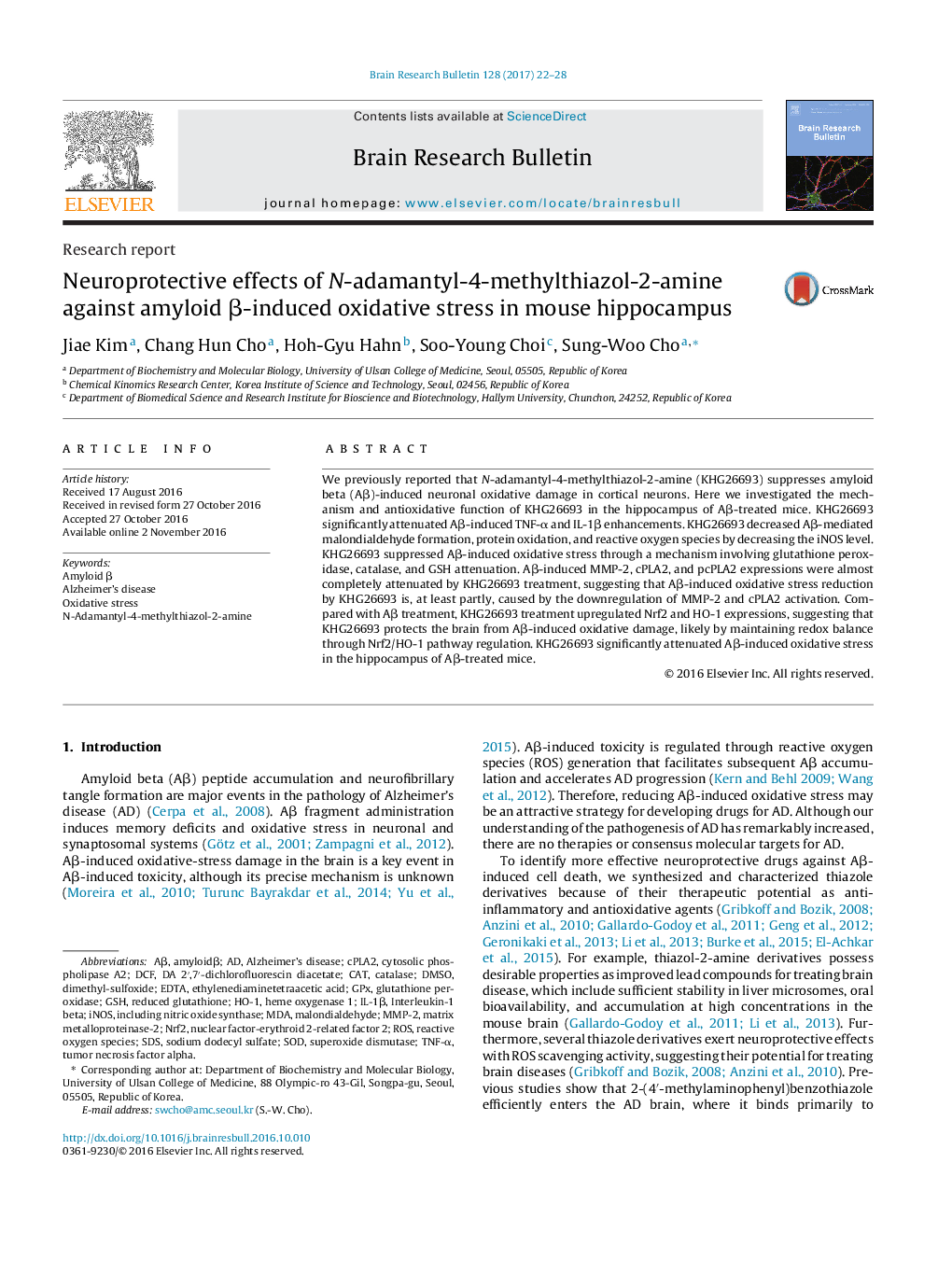| Article ID | Journal | Published Year | Pages | File Type |
|---|---|---|---|---|
| 5736226 | Brain Research Bulletin | 2017 | 7 Pages |
â¢KHG26693 attenuated Aβ-induced oxidative stress in the hippocampus of mice.â¢KHG26693 attenuated Aβ-induced TNF-α and IL-1β enhancements.â¢KHG26693 attenuated Aβ-induced protein oxidation and reactive oxygen species.â¢KHG26693 attenuated Aβ-induced MMP-2, cPLA2, and pcPLA2 expressions.â¢KHG26693 attenuated Aβ-induced Nrf2 and HO-1 expressions.
We previously reported that N-adamantyl-4-methylthiazol-2-amine (KHG26693) suppresses amyloid beta (Aβ)-induced neuronal oxidative damage in cortical neurons. Here we investigated the mechanism and antioxidative function of KHG26693 in the hippocampus of Aβ-treated mice. KHG26693 significantly attenuated Aβ-induced TNF-α and IL-1β enhancements. KHG26693 decreased Aβ-mediated malondialdehyde formation, protein oxidation, and reactive oxygen species by decreasing the iNOS level. KHG26693 suppressed Aβ-induced oxidative stress through a mechanism involving glutathione peroxidase, catalase, and GSH attenuation. Aβ-induced MMP-2, cPLA2, and pcPLA2 expressions were almost completely attenuated by KHG26693 treatment, suggesting that Aβ-induced oxidative stress reduction by KHG26693 is, at least partly, caused by the downregulation of MMP-2 and cPLA2 activation. Compared with Aβ treatment, KHG26693 treatment upregulated Nrf2 and HO-1 expressions, suggesting that KHG26693 protects the brain from Aβ-induced oxidative damage, likely by maintaining redox balance through Nrf2/HO-1 pathway regulation. KHG26693 significantly attenuated Aβ-induced oxidative stress in the hippocampus of Aβ-treated mice.
